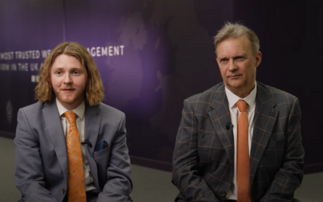Partner Insight: James Bateman, chief investment officer for Multi Asset at Fidelity International, argues investors need to ensure they are protected against negative market movements following February's pull-back.
Markets saw a pull-back at the start of February, although at time of writing, this seems to be easing. Let's be clear - in the long span of financial history, this is not news. Yet in a world where the concept of a ‘correction' almost feels alien, and where equities felt like an unstoppable one-way bet for a while, the normality of a setback can feel more painful.
But what we have seen is perhaps the greatest sign of real health in markets for a long time. The tech-fuelled rally in the US had long lost any sense of reality in its valuations, the prospect of inflation remaining low forever could not last, and we have a new and untested Federal Reserve chair. It would be more worrying if markets didn't react to all of this.
Even accounting for recent price action, US equities remain up by around 50% since early 2016. The recent price action may feel unusual because we have become so used to a low volatility environment, with economic data having been consistently positive across the globe in 2017.
So where do we go from here?
Alan Greenspan, a former Fed chair, said at the end of January that bond and equity markets were in a bubble. But there is little new in this. It doesn't take a former Fed chair to tell you that bond markets are in a bubble when two year German bunds are trading below the ECB's deposit rate, or that equities are vulnerable to a pull-back when they have been breaking decades-old records for the past several months.
Bubbles can persist for a long time, and while we might see a resumption of the previous (tech-led) trend, it seems more likely that this pause for breath will lead to a reassessment of the market's leadership.
What might derail this thesis? The new Fed chair, Jerome Powell, has the potential to mis-step in more ways than one. As ever, the role of Central Bank head is to walk a tightrope between prudence and sentiment. Either over-tightening or a delay in tightening that would suggest a loss in confidence could spook equity markets and lead to a further leg down.
Click here to read more about how investors can hold this course of volatility at this stage of the cycle.













